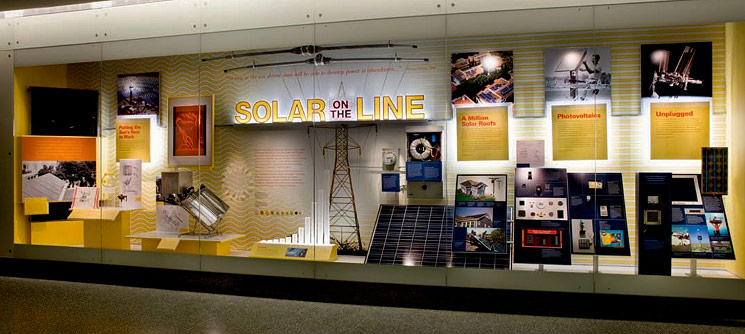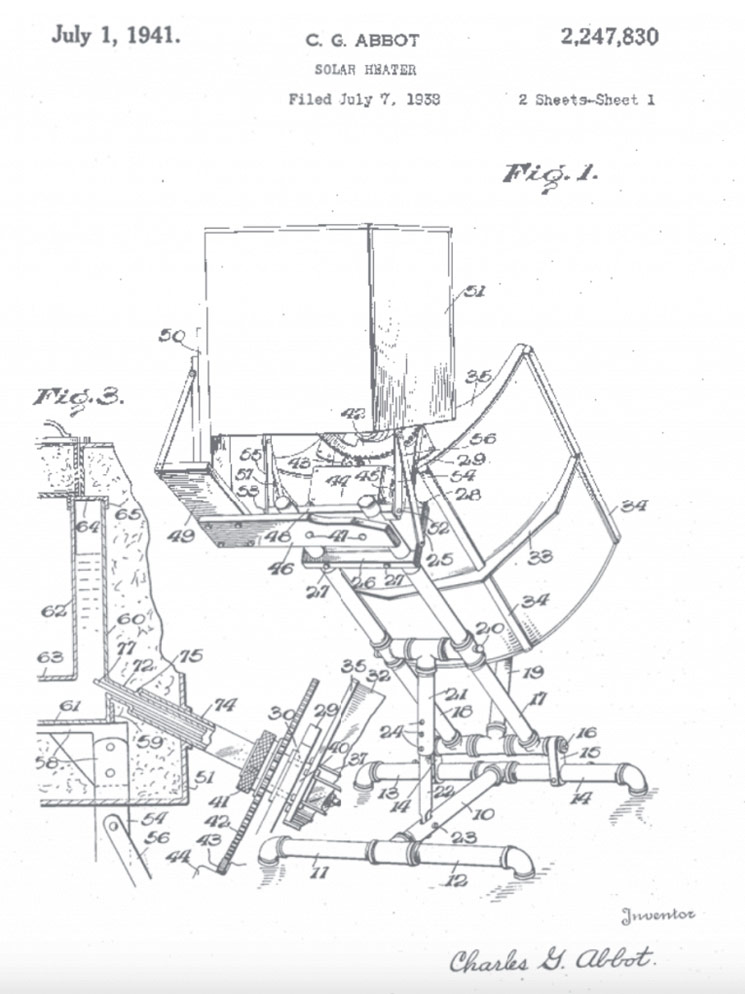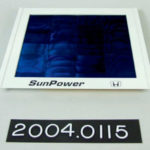By Smithsonian National Museum of American History April 10, 2017

© Smithsonian National Museum of American History
Solar on the Line, an exhibit on display now at the Smithsonian National Museum of American History, explores the innovation and technology behind solar power as a renewable energy resource and presents multiple views on the potential benefits and challenges of this technology. The display introduces visitors to the history of solar energy use in the U.S. both as part of the electrical grid as well as an off-grid supplement. Two solar panels are on display, one from the Carter White House, which the president installed to heat water in 1979, and the other a recent acquisition from the California Million Solar Roof Initiative. Supporting technology on view includes a 2016 bi-directional electric meter, solar electric inverter, and solar controller panel which will help visitors understand how solar panels work.

Flip the switch. Plug it in. Americans rely on a constant supply of electricity. Where does all that power come from? Burning fossil fuels— coal, oil, and natural gas—has been the most common way to generate electricity. But that releases greenhouse gases that contribute to global climate change. Although no energy source is perfect, using renewable sources including solar energy is becoming an important option.
Humans have used the sun’s light and heat for millennia but only recently learned how to convert solar energy to electricity. Researchers today are tackling technical and economic challenges to make solar power more efficient, reliable, and cost-effective. And people across the country—from the board room to the dining room—are deciding to “go solar.”

For centuries, inventors and entrepreneurs marveled at the idea of harnessing sunlight for the betterment of humanity. On Nov. 29, 2016 the Smithsonian’s National Museum of American History opened “Solar on the Line,” a small display exploring the innovation and technology behind solar power as a renewable energy resource. It introduces visitors to the history of solar energy usage in the U.S. and how it is a part of the electrical grid as well as an off-grid supplement. The museum presents an overview of the potential benefits and challenges of this technology.
Thomas Edison, Edmond Becquerel, Smithsonian Secretary Charles G. Abbot and Bill Nye the Science Guy have all advocated for solar energy—believing in a world where renewable energy could provide power for human needs as mundane as heating a tea kettle. The display draws artifacts from across the museum’s collections and includes new acquisitions as well as artifacts that have never been displayed. At the Smithsonian, Abbot experimented in the 1930s with concentrating light to harness heat for cooking and other uses. His 1938 solar oven will be on view alongside a Hoffman Electronics 1961 Solar Radio; a 1940 lightsensitive P/N junction from Russell Ohl, recognized for patenting a precursor to the modern solar cell; a Bell Labs 1954 photovoltaic cell; and Comsat solar cells from 1975.

Engineer Russell Ohl worked at Bell Labs during the 1930s. While researching semiconductors—materials whose ability to conduct electricity can be manipulated—he found positive (P) and negative (N) regions created by impurities in his silicon sample. The barrier between the regions, called a P-N junction, prevented electrons from moving—until he exposed the silicon to sunlight. Then electrons crossed the junction and generated a current, converting sunlight into electrical energy. The silicon rod mounted in this reflector contains a P-N junction across the center. Ohl’s discovery contributed to the invention of both solar cells and transistors.
“So long as the sun shines, man will be able to develop power in abundance,” said Edison. This idea has passed from generation to generation. The display will showcase the imaginative ideas of what scientists thought solar energy could do and can do, and will feature objects that demonstrate uses for the sun’s rays as well as how sunlight can be converted into electricity.
Hal Wallace, the museum’s curator of electricity, said “This exhibit aims to help museum visitors understand the history of solar energy use in America and the issues involved in evaluating solar energy as a source of electric power for the future.”
The display also will look at the development of “photovoltaics” the term for generating electricity from light using solar cells. Engineers have used solar cells to power satellites on long-term space missions because of their reliability. The function of a solar cell is to capture a ray of light and convert it into electricity. On Earth, photovoltaics can be used to power devices such as household appliances, various vehicles, communication relays and even entire buildings in a costeffective, reliable and efficient manner.

In February 1994 this experimental solar module set a record for efficiency by converting nearly a quarter of the sunlight that shone on it into electricity. A team from SunPower Corp., Sandia National Lab, and EPRI were investigating ways to mass produce high-efficiency solar cells. To test their process, the team made the cells that Honda used to win the 1993 World Solar Challenge car race. Cells from that production run went into this panel—and it can still produce about twenty-six volts today.
“Solar on the Line” complements another new exhibition, “Giving in America,” which examines the role of philanthropy in the U.S. with a focus on sustainability and the environment. It opened Nov. 29 to coincide with #Giving Tuesday, a global day of giving back. Through incomparable collections, rigorous research and dynamic public outreach, the National Museum of American History explores the infinite richness and complexity of American history. The museum helps people understand the past in order to make sense of the present and shape a more humane future. The museum is continuing to renovate its west exhibition wing, developing galleries on democracy and culture. The museum is located at 14th Street and Constitution Avenue N.W., and is open daily from 10 a.m. to 5:30 p.m. (closed Dec. 25). Admission is free. For more information, visit http://americanhistory. si.edu. For Smithsonian information, the public may call (202) 633-1000.




